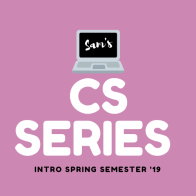Chapter 3 of The Software Craftsman is spent defining what is a Software Craftsman. The earlier parts of the chapter are spent on talking about the history of Software Craftsmanship, that is all very interesting but I’d like to discuss the Software Craftsmanship manifesto.
Not only working software, but also well-crafted software
Not only responding to change, but also steadily adding value
Not only individuals and interactions but, also a community of professionals
Not only customer collaboration, but also productive partnerships
So, lets take a look at this line-by-line. The first line states “Not only working software, but also well-crafted software”. I think we can all agree as some form of software developer this is the best thing to strive for. The question then becomes, how do we get here? Sandro makes a statement that is truly interesting. After describing what any good developer would know to be truly well-crafted software, Sandro states “In order to evolve applications, developers must not shy away from changing them.”. This statement is so intriguing to me because it simply makes sense. You can’t have evolution without change, and you want your software to evolve to “well-crafted”, right? Well in order to do that, you’re going to have to make changes to the code, sometimes that may be big. Other times it may be small.
The next line says we should be steadily adding value to the project. This is again something that no one can refute as a good thing. However, I think as developers, we many times find it hard to “Leave it cleaner than we found it”. As you are reading this I can almost guarantee that you are thinking back to a time where you made a bug fix, but that bug fix made things just a little bit messy. I am sure whatever reason you had for putting in that bug fix messy like that was valid. However, this starts becoming an issue when everybody working on the project adds some messy code here and there. Eventually the system becomes maintainable and it’s an unfortunate side-effect to us being humans. However, as software craftsmen we need to strive to not get caught in this net and constantly clean up the code.
The next line says we need to be a community of professionals. I really like this piece. I’ve worked with people on both ends of the spectrum (not in the software field). On one end there are people out there who will give you the bare-bones, need-to-know information to get the job done. I am unsure as to why anybody would want to do this. Flip the coin and I’ve worked with people who are delighted to share their knowledge and understanding of the given subject matter. I think mentor-ship is incredibly important. If no one ever mentored a young developer and didn’t pass down the knowledge that’s been attained over their long career, then the young developer is going to fall into all the same pitfalls that has plagued software development for years.
This final line in the manifesto, is essentially stating: In order to succeed you will need to act as a professional. It also talks about the flip side of your manager needing to act as a professional and expect you to act as a professional. We should want to strive to produce the best possible products we can and in doing just that, I think a lot of the time the customers or the employers are more willing to work with you through issues. They are able to see past you as their employee or contractor and begin to see that developing software is a partnership. In order to create good software there needs to be professionalism on both sides of the coin.
Chapter 4 talked about attitude of the software craftsmen. More so the chapter discussed our attitude towards pursuit of knowledge. The pursuit of knowledge should be a personal burden and not a burden you try and place of your employer. It is your sole responsibility to continuously improve skills and knowledge as a craftsman.
Many of the ways to improve this were discussed in an earlier blog covering “The Clean Coder” book. I won’t re-hash something I’ve already discussed. But as a brief summary, some good ways to extend your knowledge is through books, blogs, podcasts, training events, seminars, meetups and coding challenges.
From the blog CS@Worcester – Tyler Lundstrom by CS@Worcester – Tyler Lundstrom and used with permission of the author. All other rights reserved by the author.

 Hey guys, here’s to another (and my last) semester of this CS series of blog posts!
Hey guys, here’s to another (and my last) semester of this CS series of blog posts!
